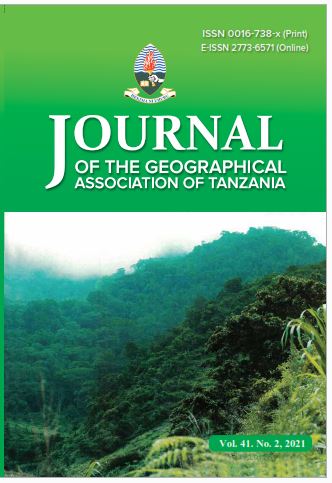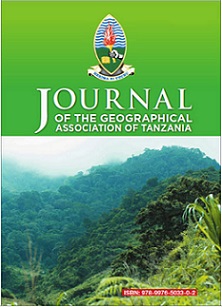Determinants of the Availability of Non-timber Forest Products for Households ' Adaptation to the Effects of Climate Variability in Iringa District, Tanzania
Abstract
This cross-sectional study was conducted to examine determinants of the availability of non-timber forest products (NTFPs) for household use as a strategy for adapting to the effects of climate variability in the Kitapilimwa Forest Reserve (KFR) in Iringa district, Tanzania. The study involved 400 participants. Data were collected through structured interviews, in-depth interviews, focused group discussions, field observation and documentary review. Findings reveal that local communities in the study area are vulnerable to the effects of climate variability. Also, they show that 52.4% of the respondents extracted NTFPs from the KFR as a strategy for adapting to the effects of climate variability. Besides, the study found that the main determinants of the availability and effective household use of NTFPs as an adaptation strategy are anthropogenic degradation and loss of NTFPs, the implications of KFR access by-laws, effects of climate variability on the availability of NTFPs, perception of fairness of trade in NTFPs, and seasonal availability of NTFPs. The study concludes that despite the important role of NTFPs from the KFR being used as a strategy for adapting to the effects of climate variability, there are factors that limit the availability and effective household use of NTFPs as an adaptation strategy. It is recommended that the government involve local communities in developing a policy framework that promotes a sustainable harvesting of NTFPs. Also, the government and the private sector should support all efforts to diversify livelihood sources of rural households to reduce their dependency on natural forests. Lastly, the government should monitor and regulate trade in NTFPs.
Keywords: non-timber forest products, semi-arid, climate variability, adaptation



